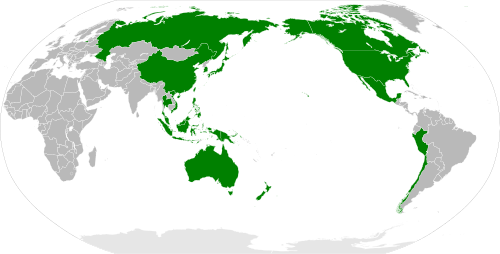AST1000/e-Learning activities/Defining Asia and the Pacific
From WikiEducator
Tasks
- Compile a list of countries you think comprise the Asia-Pacific region.
- After compiling your list, use an Internet search to identify which countries are normally identified as belonging to the Asia-Pacific region and whether they appear on the regional map in the stimulus above.
- Select 3-5 countries from your researched list and upload them onto the <Course wiki link to be added. Check pipes> Wiki List for this e-learning activity to share with your fellow students. If your countries are already listed you can signal your agreement by inserting a smiley face or a tick. Take time to look at what other countries students have listed.
- After completing Steps 2) & 3), document in around 50-100 words the similarities and contrasts between the countries which appear on the list you devised, as well as the class <Course wiki link to be added. Check pipes> Wiki list. Did your initial idea of an Asia-Pacific country match your researched list and the class <Course wiki link to be added. Check pipes> Wiki?
